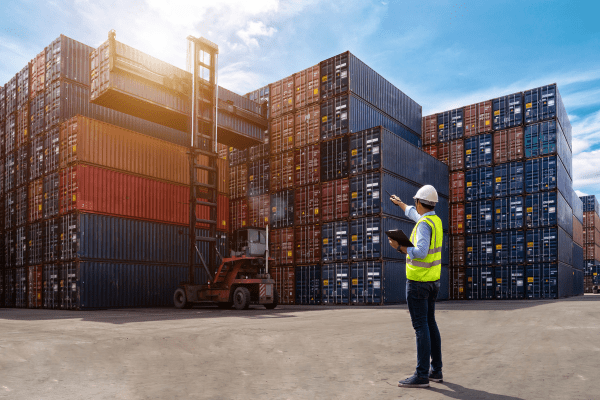
You’ve no doubt seen the vast number of articles about the shipping and supply chain issues recently, but this not a new situation, as we’ve been dealing with it for nearly two years. How did we get here?
The global shipping crisis started late 2019 with a double whammy in the demand for ocean freight. First, retail giants had prepared for the Christmas shopping season with finished goods ready to be shipped in order to ensure that they were on shelves by November. Hot on the heels of this peak season was the Chinese New Year in January 2020.
With two peak ocean freight shipping events occurring at the same time, ocean freight prices started to rise. Rumors had also been circulating about a SARS like illness in some parts of China prior to the New Year holiday. This of course turned out to be the COVID-19 virus.
The Shipping Crisis: A Timeline
Late 2019 – Demand for global shipping gets a huge spike
- Pre-Christmas shopping season
- Chinese shutdown for New Year Holiday in early 2020
Both events mean that all retailers and manufacturers are in a rush to get goods and inventory into country before December. Ocean Freight Prices start to rise.
Early 2020 – COVID & Lockdowns
- Governments around the world put their populations into lockdown to limit COVID spread & take pressure off strained hospital systems.
- Manufacturers around the world cancel or reduce orders on expectation of reduced demand
- Order cancellations means container shipping cancellations
- Shipping lines start to scrap older vessels or mothball inactive ones
- Lockdowns see many older transport workers retire, with no training for new drivers
- Populations in lockdown unexpectedly start to order goods online in record numbers
Mid 2020 – Demand Outstrips Supply
- Online orders for electronic entertainment and communications equipment quickly gobble up surplus chips from auto manufacturer cancelations
- Worker shortage in Asia, EU & USA means less workers available to handle more orders
- Shortage of Truck Drivers
- Shortage of Port Longshoremen
- Shortage of Rail Staff
- Shortage of Warehouse workers
- Shortage of Shipping Vessel Crew
Late 2020 – All of the Above
- All of the above factors means that supply of raw materials and finished goods experience significant delays and prices rise again.
- Economies reopen & rebound faster than expected
- Annual Pre-Christmas shopping season rush
2021 – More of the same… but worse
- The COVID related worker shortage around the globe leads to massive congestion in the supply chain
PORTS
- Asian Shipping ports operate 24/7
- Shipping vessels keep getting bigger
- US ports operate 5-6 days (not around the clock)
- More containers to be unloaded at ports around the world with less staff
- 170 vessels await unloading off US ports
- Port congestion means that shipping lines start to skip scheduled stops
- Once unloaded, there are more containers to load onto road and rail – with less staff
ROAD & RAIL
- There are now over 7 available loads to 1 able to be moved.
- Waiting times for truck drivers increases 400%
- At the warehouse, there are less staff to unload them, leading to longer wait times
- Electronic tracking and enforcement of strict DOT laws on driver hours means more drivers leave industry
- Container trailer chassis are in short supply
- Empty shipping containers cannot be returned to port of origin and get stockpiled at ports
- Delta Variant of COVID further impacts efficiencies throughout the globe
FINANCIAL IMPACTS
The impact on all of the above results in the following:
- Ocean Freight prices increase 400% +
- Road freight prices double
- Delays in receiving goods increases 400%
- Tariffs are still being charged
- Many commodity items increase in price; Lumber, Steel, Cement, Electronics, Furniture
- Consumer Price Index has Year-on-Year increase in September of 5.4% with many sectors showing much larger price rises.
CRYSTAL BALL
The scene above is duplicated around the globe, EU, South America and Asia.
There is no light at the end of the tunnel with the Pre-Christmas rush upon us once again, the factors at play are not being resolved. The Global Supply Chain has run very lean for many years, but these major events have shown just how fragile it is. The rippling effect of delay and congestion continues to contribute to many items being out of stock and costing more when they are available.
Many large retailers have resorted to chartering their own vessels, but this will only mean more containers to move once the goods land in the US. Domestic manufacturing is also now back in the spotlight. Although costs will be higher, the risks involved in getting finished goods to consumers will be reduced.



